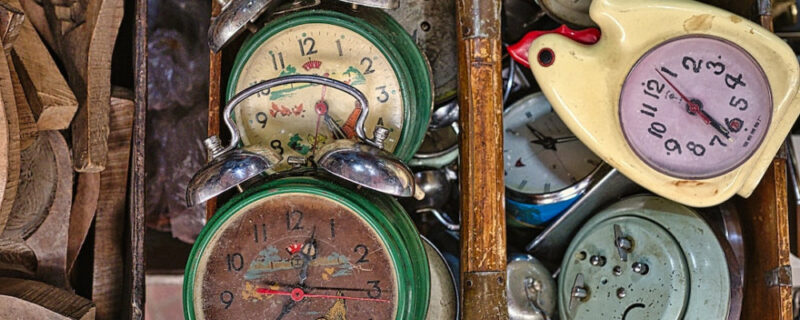Welcome to your ultimate “First 72 Hours Survival Guide.” Why are the first 72 hours so critical for your new chicks? Because this is when they’re most vulnerable and when you can lay the foundation for a healthy, thriving flock. In this guide, we’ll navigate common challenges and provide comprehensive solutions. So, let’s dive in!
Why Are The First 72 Hours Critical?
Physical Vulnerabilities
When you have newborn chicks, understand they’re not little feathered Spartans. They don’t have the luxury of a mother hen’s warmth, and their immune systems are as green as spring grass. That’s why you must provide a stable, warm, spacious, and comfortable environment.
Environmental Risks
Your chicks aren’t just navigating internal struggles; they also have external battles. We’re talking about predators and even harsh weather conditions. Make sure your brooder and coop are as secure as Fort Knox.
Make certain that latches are critter-proof and that there are no holes large enough to allow a rat or a weasel to get to your new family members. A weasel only needs a hole the size of a quarter to wriggle through.
If your brooder is inside your house, ensure young children know how fragile baby chicks are. And keep a close eye on your cat. That’s not fair, I know, since domestic dogs are the number one killer of chickens.
Before They Arrive: Prepping the Coop
Cleaning and Disinfecting
Start by giving the brooder or coop a deep clean. Use a mix of water and vinegar for all-natural clean or natural commercial poultry disinfectants.
Setting Up the Heat Lamp
Newborn chicks need warmth. Set up an infrared heat lamp at a safe distance. Make sure the temperature hovers around 95°F for the first 72 hours.
Continue through the first full week, then reduce brooder temperature by five degrees each week until the brooder reaches ambient temperature or about 70 degrees Fahrenheit.
Another alternative to the heat lamp is the heat plate. It is much safer than the bulb and uses less electricity. You can get the plates at most places where poultry supplies are sold, like TSC, Walmart, etc. My favorite is the Sweeter Heater. You can read about it by clicking the link.
Hour-by-Hour Guide for the First 72 Hours
The First 24 Hours
Newborn chicks do not have to eat for the first day or two but can and should eat to be healthy. They can live off the yolk sac they are hatched with until it is depleted in a few hours.
Chicks should drink first, then they can start feeding.
- Feeding: Use a high-quality chick starter feed mixed with chick scratch (to help avoid pasty butt). Feed them every 2-3 hours.
- Water: Offer fresh, clean water. Keep it at brooder temperature! This is very helpful to avoid chick chilling, which can lead to other health issues.
I understand that there is not always time to let water reach brooder temperature naturally. You can use warm, not hot, water from the tap for the chicks’ first drink. Test the temperature on the inside of your wrist. If you can hardly feel the temperature of the water, that is just right.
Hours 25 to 48
- Feeding: Continue with the starter feed. Continue with the chick scratch, or discontinue it at your discretion.
- Water: Change water every day or whenever you see droppings in it. Adding electrolytes to the water for the first 72 hours is a good idea to get them off to a great start.
- Health Check: Look for clear eyes, active movement, and steady breathing as signs of good health.
Hours 49 to 72
- Independence: You’ll notice your chicks becoming more adventurous. It’s like chick adolescence in fast-forward!
- Lethargy: In the first 72 hours, chicks need their rest. They sleep a lot. Lethargy may or may not be a sign of illness. Look for short bursts of energy to find out if there is a problem.
Common Issues and Troubleshooting
Sudden Chick Illness
Symptoms to look for include lethargy and pasty butt. Quick solutions: warm water bath for pasty butt, and consult a vet for other concerns such as coccidiosis.
Flock Integration Problems
Start the integration process by allowing older chickens to see but not touch the newcomers. Gradual exposure is key. A separate cage within the chicken coop that has openings too small for the chicks to pass through is in order here. Think chicken wire.
Eventually, all the parties involved will get used to seeing each other but that is beyond the scope of this article.
Beyond 72 Hours
Week 1 Milestones
You’ll possibly see feathers starting to form on the wings and tail depending on the breed.
Preparing for the Weeks Ahead
Start introducing grit along with the feed. It helps with digestion.
Recommended Products for the First 72 Hours
Some must-haves include:
- Infrared Heat Lamp or plate heater
- High-Quality Chick Starter Feed and chick scratch
- Secure Fencing/chickenwire
- Electrolytes for their water
- Waterer and feeder. The feeder should be constructed to keep the chicks from pooping in and scratching in the feed.
The 72 Hours is Up
And there you have it, your comprehensive guide to surviving and thriving during the first 72 hours with your new chicks. Don’t just wing it; plan, prepare, and prosper! As always, thanks for reading. I truly appreciate your time with me and my blog.
Dave
Chickenmethod.com



